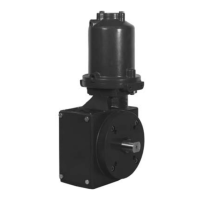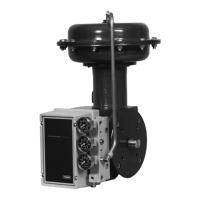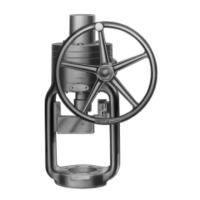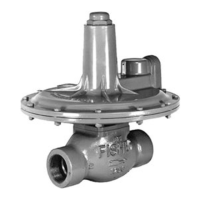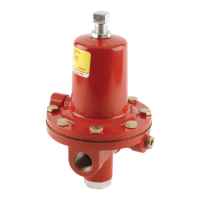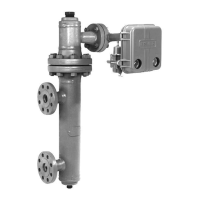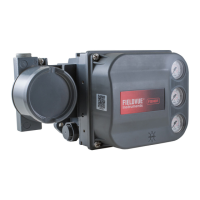Types 1098-EGR and 1098H-EGR
17
any other surfaces as necessary for ease of
installation. No further main valve maintenance
is necessary if just the indicator tting and
attached parts were removed.
7. Install the plug O-ring (key 20) and piston ring
(key 14) onto the valve plug. Insert the valve
plug into the body ange, install the cage plus
upper seal and O-ring into the body ange and
then install the seat ring plus port seal into the
cage. Apply a thin coating of lubricant to seals
for protection during assembly. Use the valve
body as a holding xture during this step as
shown in Figure 10, and insert a wrench handle
(or similar tool) into the seat ring slots for
leverage when tightening the seat ring and cage.
8. Remove the upside-down body ange if it was
anchored on the body. Coat the cage seating
surfaces of the valve body web and the body
ange seating surfaces of the valve body neck
with a good grade of general-purpose grease.
Install the body ange on the body, and secure
it evenly with the cap screws or stud bolt nuts.
Except on the 1-inch (DN 25) body, which does
not use it, the pipe plug (key 31) must be
installed in the side tapping of the ange for
proper operation.
9. Make sure that the ange and stem O-rings
and the bushings are installed in the indicator
tting. Orient the spring seat as shown in
Figure 12, and attach it with the E-ring to the
slotted end of the indicator stem. Install the
travel stop (if used) on the spring seat, and then
install the spring.
10. Being careful not to cut the stem O-ring with
the stem threads, install the indicator tting down
over the indicator stem until resting on the
spring. Install the hex nut and then the anged
indicator nut on the indicator stem, pushing on
the tting if necessary to provide sufcient stem
thread exposure. To maintain clearance for
indicator part installation, draw up the spring
seat by turning the hex nut down on the stem
until the threads bottom.
11. Install the indicator tting with attached parts
into the body ange. Back the hex nut off
until the spring completely closes the valve plug
against the port and upper seals, as indicated
by stem threads showing between this nut and
the tting. Hold the indicator scale against the
tting with the scale base resting against the
shoulder of the tting, and turn the indicator
nut until its ange is aligned with the bottom
scale marking. Then lock both nuts against each
other, and install the indicator scale and protector.
P590 Series Filter
Perform this procedure to clean or replace lter parts
in a standard Type P593-1 or P594-1 lter assembly.
Remove the following (as shown in Figure 15): lter
body (key 1), machine screw (key 4), gasket (key 7),
two at washers (key 5), and lter element (key 2).
Upon reassembly, one of the at washers must go
between the lter element and lter head (key 3) and
the other must go between the lter element and
gasket. Use a good grade of pipe thread sealant on
the lter head pipe threads.
Type 6351 Pilot
Perform this procedure if changing the control spring
for one of a different range, or if inspecting, cleaning, or
replacing any other pilot parts. Pilot key numbers are
referenced in Figure 16 and mounting key numbers in
Figure 25, 26, 27, or 29.
Note
The body assembly (key 1) may remain
on the pipe nipple (key 23, Figure 25,
or key 39, Figure 29) unless the entire
pilot is replaced. The optional bonnet
(key 2) for a Type 662 electric remote
control drive unit may remain installed
during maintenance.
1. To gain access to the diaphragm assembly
(key 7), control spring (key 9), or spring seat
(key 8), loosen the locknut (key 11, not used
with Type 662 mounting), and turn the adjusting
screw (key 10) out until compression is removed
from the spring. Remove the machine screws
(key 12), and separate the body assembly from the
spring case.
2. Inspect the removed parts and replace as
necessary. Ensure the registration and bleed
holes in the pilot body are free of debris. After
assembly, make sure of the proper control spring
setting according to the Startup section and
remark the spring case if necessary.
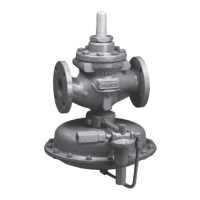
